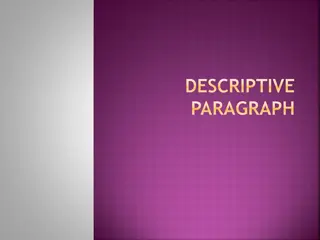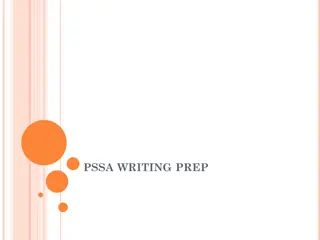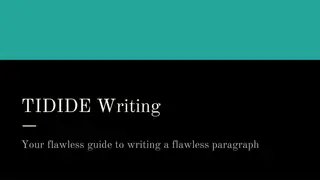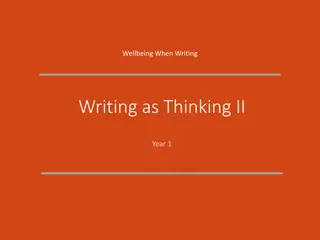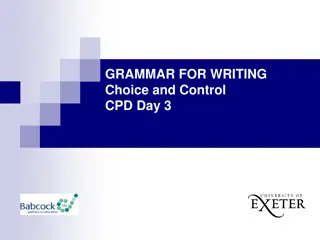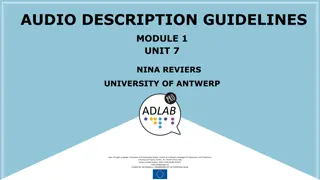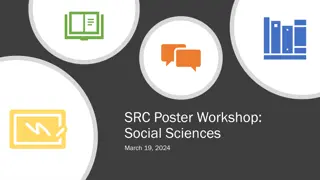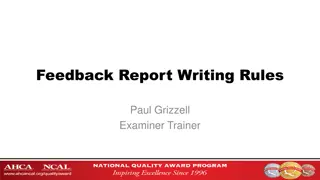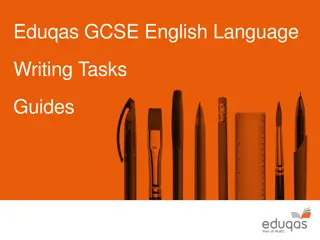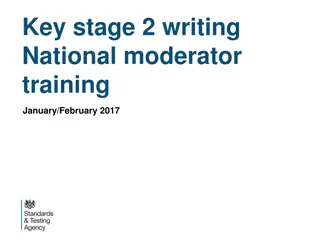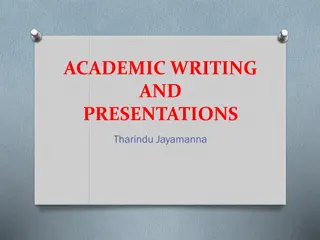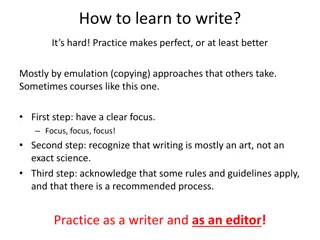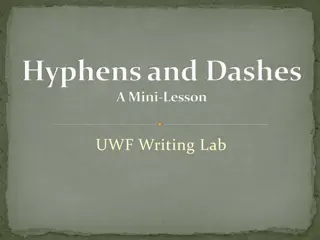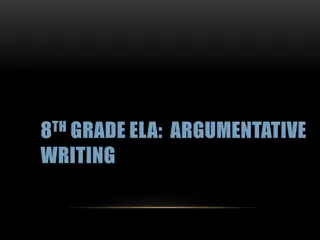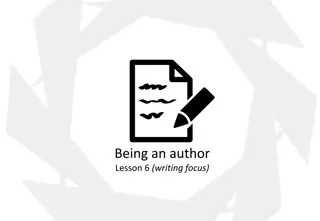Mastering Description in Writing
Effective description in writing is crucial for creating vivid images, establishing mood, and conveying a dominant impression. By using specific nouns and action verbs, writers can make their descriptions lively and engaging. The goal is to move from general to specific details, painting a clear picture for readers. Descriptive writing strategies include creating a dominant impression, providing objective and subjective descriptions, and using detailed imagery to inform and engage the audience.
Download Presentation

Please find below an Image/Link to download the presentation.
The content on the website is provided AS IS for your information and personal use only. It may not be sold, licensed, or shared on other websites without obtaining consent from the author. Download presentation by click this link. If you encounter any issues during the download, it is possible that the publisher has removed the file from their server.
E N D
Presentation Transcript
Chapter 5: Description Content Adapted from: Eschholz, P. & Rosa, A. (2014). Subject and Strategy A Writer s Guide. Boston: Bedford/St. Martin s Presented By: T. Dela Cruz English Department, Guam Community College June 2015
Good description creates vivid and specific pictures that clarify, create a mood, and build a dominant impression.
Show, dont tell. Use specific nouns and action verbs. See page 135 talk vs. whisper, scream, babble, gossip, etc. The more specific and strong you make your nouns and verbs, the more lively and interesting your descriptions will be.
This is your goal. General vs. Specific General Car Food Place Specific Sports Utility Vehicle Sandwich Guam More specific 2014 Toyota 4runner Wendy s Baconator Guam Community College, Mangilao, Guam Summer 2015 T. Dela Cruz, EN 110-01 and EN 110-02 Class Freshman Composition School Music Event
Description as a Writing Strategy Use description to inform and provide specific data The details you provide will depend on the writing assignment (subject + direction). Key descriptive writing strategies: Dominant impression Objective description Subjective description
Dominant Impression Create a mood or atmosphere to convey your point of view.
Lucky Please help me find my dog. He is a mongrel with the head of a poodle and the body of a wolfhound, and his fur is patchy and dingy-gray. He has only three legs, but despite his arthritis, he uses them pretty well to hobble around and scratch his fleas and mange. His one seeing eye is cloudy, so he runs with his head sideways. His ragged, twisted ears enable him to hear loud sounds, which startle his troubled nervous system and cause him to howl pitifully. If you give him a scrap of food, he will gum it up rapidly and try to wag his broken tail. He answers to the name of Lucky.
Objective Description Objective description involves clear and direct details outside of emotions; it is factual focusing on actual qualities (She has long, blonde hair. vs. Her hair is like a cascading waterfall. Or exactly four weeks vs. all the time in the world to finish the project) Some examples: Explaining the function of the human heart What a computer chip looks like How to renovate your front porch Description of a vehicle Directions to your house Guam style or otherwise Much of what you say will not reflect your feelings and emotions.
Subjective Description Also referred to as emotional description Conveys the writer s personal views of the subject The Art of Eating Spaghetti Zinsser High school graduation Memorable moments There can be a mixture of objective and subjective description. In Roger Angell s On the Ball, we can see how he begins in objective description and moves on subjective description. Roger Angell, On the Ball
Lets practice: Identify objective details Add subjective details
Sensory Description Use your senses to describe.
Sensory Images Sitting here in Harold s Hefty Burgers at midnight, I am convinced that I am eating the ultimate form of food. The buns are feathery soft to the touch but heavy in the hand and soggy inside. As I take a full-mouth, nononsense bite, the melted cheese and juices cascade over my fingers and make little oil slicks on the vinyl table below. I chew noisily and happily like a puppy at a food bowl, stopping occasionally to fl ush down the rich, thick taste of spicy animal fat with a swig from a chilled mug of fi zzing root beer that prickles my nose. Over at the grill, the smell of frying onions creeps away stealthily on invisible feet to conquer the neighborhood, turning hundreds of ordinary citizens like me into drooling, stomach growling, fastfood addicts, who trudge in from the night like the walking dead and call out the same order, time after time. Hefty Burger. Hefty Burger. Hefty Burger. (Dale Scott, Hefty Burger )
Dialogue Dialogue is used when telling stories to characterize, particularize, and support ideas. It shows how people talk and think as individuals or representatives of society. Dialogue is not used for boring blurbs such as, Hi, how are you? There is no meaning and it does not depict character or personality. Use dialogue to share what your grandma used to tell you as a young girl, Stop sitting like a boy, you re not a boy. Close your legs. or how your mom finally made you understand something, The biggest mistake I made as a parent was spoiling you.
Descriptive Writing How-To, pgs. 134-137) What is your purpose? To inform, express emotions, persuade, entertain, something else? Describe with a thesis (main idea) in mind; an idea you want to convey to your readers. Show, don t tell. Choose your nouns and actions with care. Use objective, subjective, and sensory description. Be more specific and not general. (Capriciossa Seafood Spaghetti vs. pasta) Create a dominant impression. Use details the add to your dominant impression. Organize your details to create a vivid picture. Write the details in order for coherence
More practice She is old.


